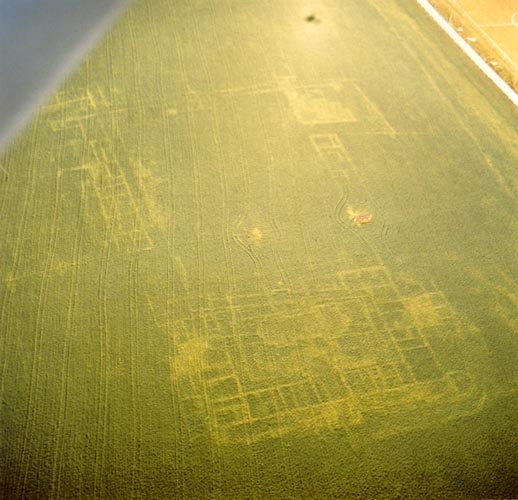- Home
- Discoveries
- Gallo-Roman settlements
- The end of the Gallo-Roman world
How did we go from the rural Gallo-Roman settlement, consisting of large isolated properties designed by architects, to the Middle Ages way of life — the origin of our own — i.e. grouped villages? Aerial flyovers the impression, which is partially false, of two different worlds with no connection between them.
Of course, in northern Gaul, there was unquestionably the near-total destruction of rural structures between 259 and 275 CE. This was certainly linked to the barbarian invasions and to peasant uprisings.
Aerial photography, frequent finds of coin caches, and excavations confirm the extent of the catastrophe, as do hagiographic, accounts (Courcelle, 1964) and several official texts from the period. These include the panégyric by Constantius Chlorus, which attests that the country had reached the depths of misery, but that, afterwards, the land was recultivated by the same barbarians — the leti who became soldier-farmers.
Life resumed in the countryside. In a few rare cases, the same isolated villa remained and was reconstructed on a much larger scale and became a genuine rural palace, like at Vieux-Rouen. The landed aristocracy remained at certain sites, and there must have been some extremely luxurious villas, as we can see in the mosaic from Blangy-lès-Fismes (Aisne), on display at the library at Laon.
The destruction wrought in the late third century also affected the cities and secondary agglomerations, like at Vendeuil-Caply (Oise) and Vieil-Evreux (Eure), which were only sporadically reoccupied thereafter.
Ecoust-Saint-Mein (Pas-de-Calais).
A Gallo-Roman villa at Flesselles (Somme).
A genuine rural palace at Vieux-Rouen (Seine-Maritime).


